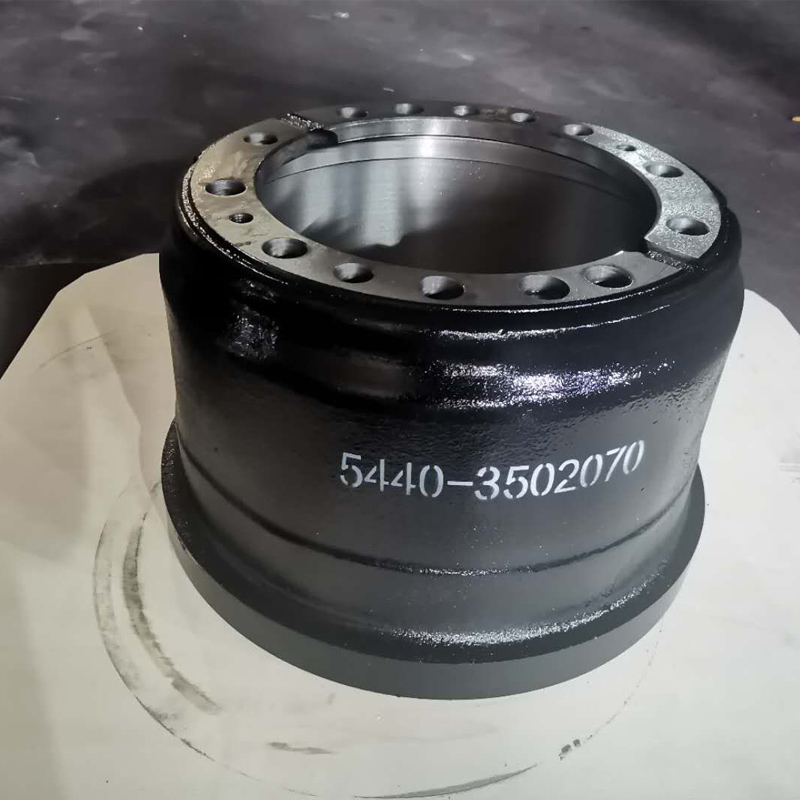Aug . 14, 2024 07:26 Back to list
Understanding Chrome Brake Drums and Their Importance in Vehicle Safety and Performance
Understanding Chrome Brake Drums A Blend of Style and Safety
When it comes to enhancing the look and performance of a vehicle, many car enthusiasts turn to various aftermarket components. One such component that has gained popularity in recent years is the chrome brake drum. While the primary function of brake drums is vital for safety, their aesthetic appeal is prompting more drivers to consider chrome-plated options. In this article, we will explore the advantages, disadvantages, and considerations surrounding chrome brake drums.
What Are Brake Drums?
Brake drums are a crucial component of a vehicle's braking system, particularly in drum brake systems. They function by providing a surface for the brake shoes to press against, thereby generating the friction necessary to slow down or stop the vehicle. Traditionally made from iron or steel, brake drums are subjected to extreme conditions, including high temperatures and intense pressure during braking.
The Appeal of Chrome Brake Drums
The primary allure of chrome brake drums lies in their shiny, reflective surface that enhances the overall appearance of vehicles, especially classic cars and customized builds. Chrome plating provides a striking contrast to the typical matte or dull surfaces of standard brake drums. For automotive enthusiasts, every detail matters, and chrome brake drums can elevate the aesthetic of a vehicle’s undercarriage, making it as appealing as the exterior or interior.
Beyond aesthetics, chrome plating can offer some level of corrosion resistance compared to traditional materials. This can be particularly beneficial in regions where road salt is prevalent, or where vehicles are exposed to wet conditions, as it helps in prolonging the lifespan of the brake drums.
chrome brake drums

Performance Considerations
While appearance is significant, performance and functionality should never be compromised. One potential downside of chrome brake drums is their heat dissipation properties. Standard brake drums are designed to absorb and dissipate heat effectively during braking. If chrome plating is too thick or improperly applied, it could affect these heat management properties. Overheating can lead to brake fade, where the efficiency of the brakes decreases with prolonged use, potentially compromising vehicle safety.
Moreover, chrome brake drums may not be as readily available as their standard counterparts, which can lead to complications when replacements are necessary. Vehicle owners should make sure that the chrome drums they invest in meet or exceed manufacturer specifications for safety and performance.
Installation and Maintenance
When considering chrome brake drums, proper installation is critical to ensure that the brake system functions as intended. It is recommended to consult with a professional mechanic or technician who is familiar with aftermarket components. Additionally, maintaining the chrome finish is essential not only for aesthetic reasons but also to prevent rust or corrosion. Regular cleaning and waxing can help preserve the shiny appearance and protect the underlying metal.
Conclusion
Chrome brake drums represent a unique intersection of style and safety in automotive customization. While their aesthetic appeal can significantly enhance the visual impact of a vehicle, it is crucial for drivers to consider their functional implications carefully. Opting for chrome brake drums should involve weighing the aesthetic benefits against potential performance issues and ensuring that they meet the required safety standards. Ultimately, when chosen wisely, chrome brake drums can be a striking addition to any vehicle, combining form with function in the world of automotive enhancements.
-
Scania Brake Drums: OEM Quality for Optimal Safety & Durability
NewsAug.16,2025
-
R.V.I: Advanced Remote Visual Inspection for Precision
NewsAug.15,2025
-
Discover HYUNDA: Innovative Vehicles, Equipment & Solutions
NewsAug.14,2025
-
R.V.I: Unlock Advanced Insights & Real-time Performance
NewsAug.13,2025
-
Kamaz Brake Drum: Durable & Reliable for Heavy Duty Trucks
NewsAug.12,2025
-
Heavy Duty Iveco Brake Drum - Premium Quality & Safety
NewsAug.11,2025
